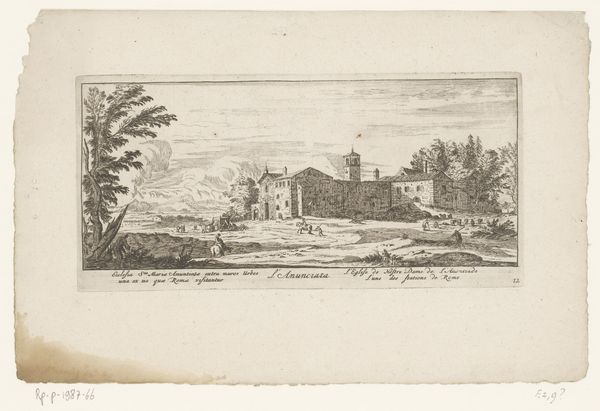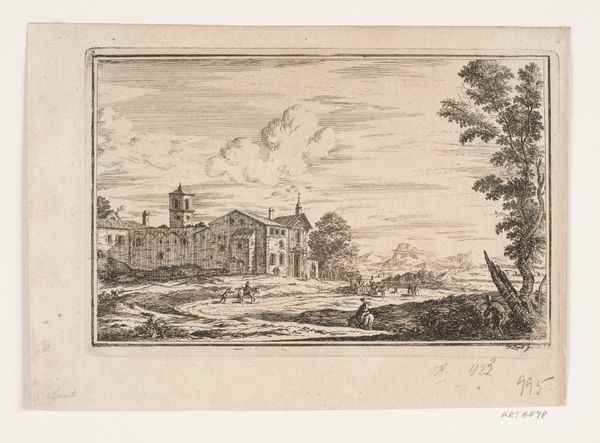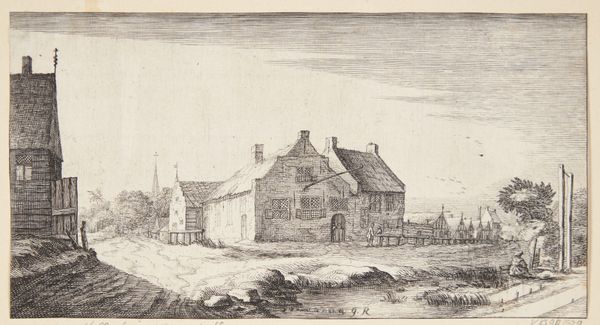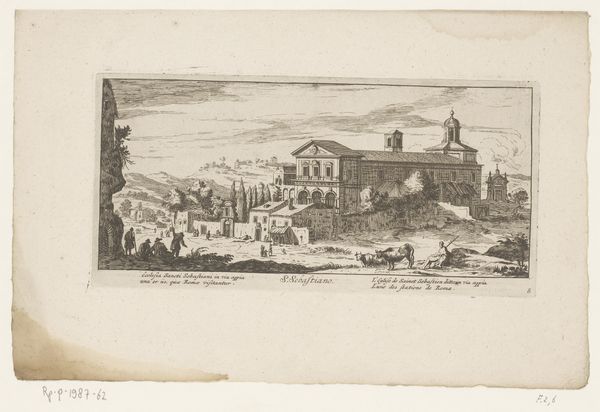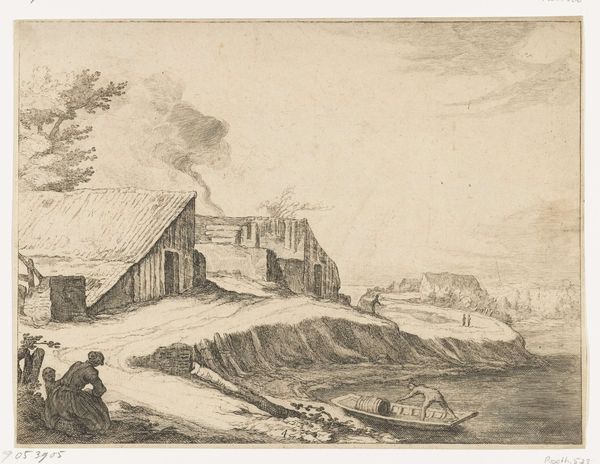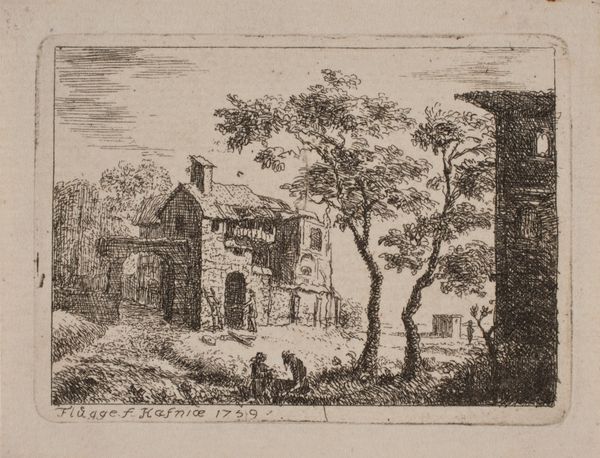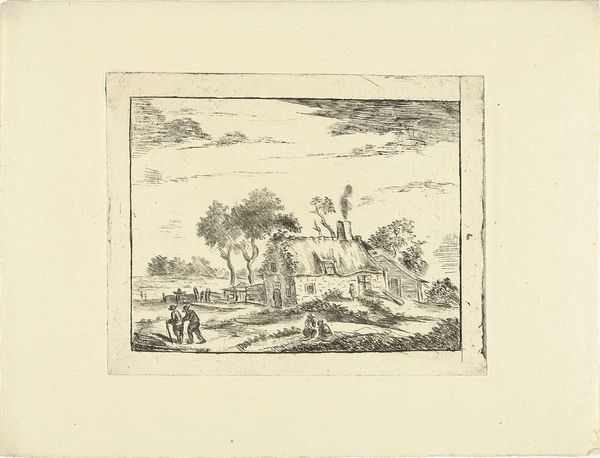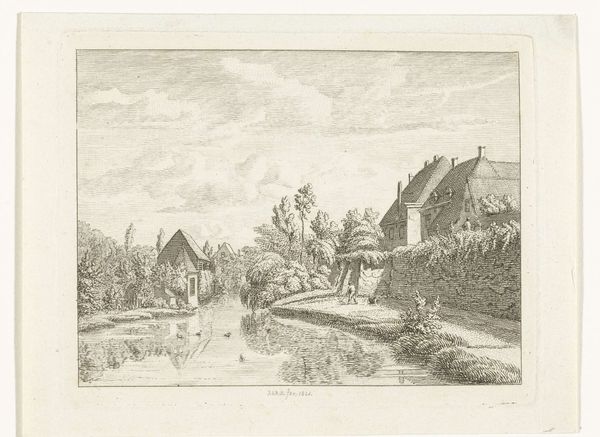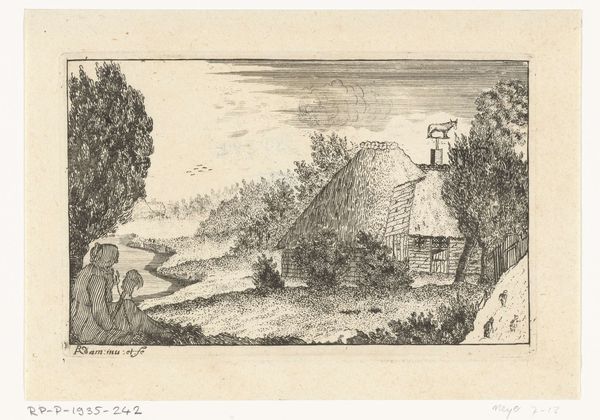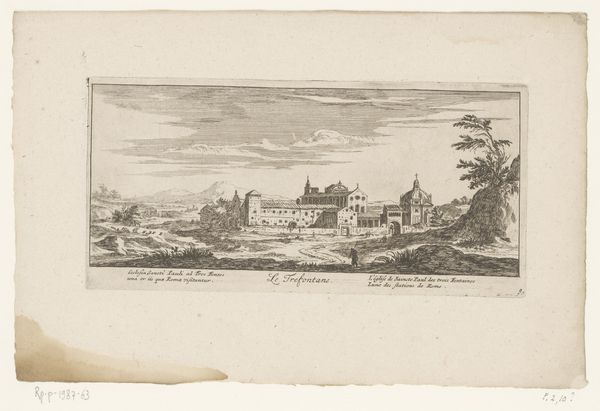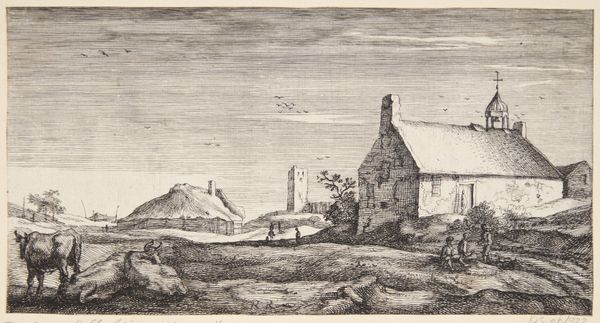
drawing, print, etching
#
drawing
# print
#
etching
#
landscape
Dimensions: plate: 5 3/8 x 9 1/2 in. (13.7 x 24.2 cm)
Copyright: Public Domain
Charles Meryon created this print of a water-mill near Saint-Denis, using etching on paper. This printmaking technique involves covering a metal plate with a waxy, acid-resistant layer, and then scratching an image into that surface with a sharp needle. When the plate is submerged in acid, the exposed lines are eaten away, creating grooves. These grooves hold ink, which is then transferred to paper under great pressure. Look closely, and you can see how Meryon used dense cross-hatching to create areas of deep shadow, and fine, delicate lines to suggest distance and light. The technique of etching was crucial to the development of printmaking as a democratic medium, because it allowed for relatively quick and easy reproduction of images. Meryon's choice of subject matter is also significant; the water-mill was a symbol of rural industry, and a reminder of the hard labor that was essential to the French economy. By paying attention to materials, making, and context, we can understand the full meaning of an artwork, and challenge traditional distinctions between fine art and craft.
Comments
No comments
Be the first to comment and join the conversation on the ultimate creative platform.
